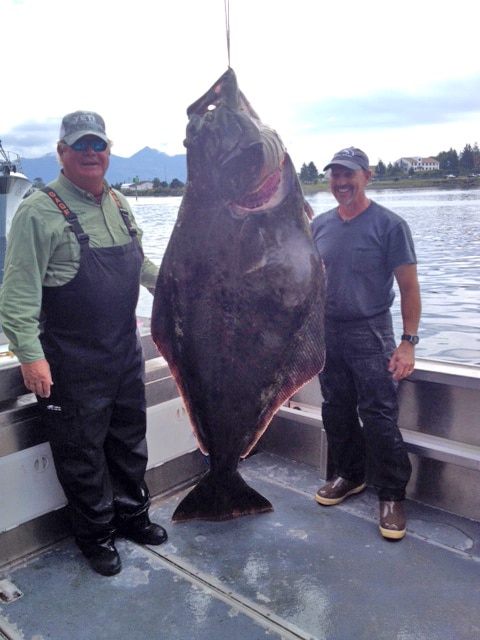Anyone familiar with Alaska’s fisheries; be it sport, subsistence or commercial clearly recognizes that there are some disturbing trends within the Pacific Halibut stock. Some of the finest minds in fisheries management and biology have been studying these trends to makes sense of what’s happening on the ocean floor and adjust management strategies accordingly, to help the stock begin to recover.
The problem isn’t that the total amount of halibut in the water is declining . . . the problem is that the halibut aren’t reaching the same size at age they were two decades ago. Again, there are number of plausible working theories why this is occurring, but there are no definitive answers.
In short, no responsible stakeholder would disagree that there need to be some reasonable conservation measures in place to protect the stock while scientists look for answers. The controversy arises when the discussions turns to what each sector must sacrifice, and how much, to be part of that conservation effort.
There’s no question that the commercial and charter fleets have both felt a significant sting as a result of the declining abundance in Ebio. The tension between these two sectors, on this issue particularly, arises from the fact that commercial fisherman and charter operators make their livelihoods from the halibut resource. Start tinkering with how people pay their mortgages and put food on the table, and people get testy – understandably.
The Catch Sharing Plan (CSP) that the National Marine Fisheries Service is currently considering for implementation by the 2014 season is a fundamental change from how the Charter sector is currently managed under the Guideline Harvest Level (GHL). The most significant change from the GHL to the CSP is the allocation level for the charter sector—an allocation level that will make it increasingly difficult to maintain existing bag limits. In Southcentral, it is foreseeable in the coming years that Alaskans will drop from two fish per day to one; and in Southeast to be reduced to one fish of a maximum size—likely 40” or smaller.
Perhaps the most troubling element of the CSP is that it doesn’t conserve one fish. Rather, it simply reallocates fish from the charter sector to the commercial sector. add insult to injury, CSP provides that if the charter sector wants any of those fish back, individual operators have the opportunity to lease them. It becomes even more insulting when you consider that since 2011, Alaska’s charter fleet has left over a million pounds of halibut in the water below their annual harvest limits.
Clearly, CSP is obviously bad for Alaska’s charter fishing fleet, but it doesn’t stop there. It reduces angler access to the halibut resource and will do untold economic harm to the coastal communities that are the home ports to the charter fishing fleet and the tens of thousands of sport anglers, who spend hundreds of millions of dollars annually, to fish our waters. A 2008 study commissioned by the Alaska Department of Fish and Game (ADF&G) indicated that sport anglers spent $1.4 billion in Alaska that supported 15,879 jobs and provided $545 million in income.
An allocation plan that serves no conservation interest, limits access for sport anglers to the halibut resource and causes significant harm to an industry that is a major contributor to Alaska’s economy is a bad idea.
ABOUT THE AUTHOR
Mr. Hilyard is the Executive Director of the Southeast Alaska Guides Organization (SEAGO), which represents charter operators and lodge owners throughout Southeast Alaska. He is a 1996 graduate of the University of Alaska Fairbanks, currently serves on the Alumni Board of UAF and was recently selected as a 2013 recipient for the “Top 40 Under 40” award.












